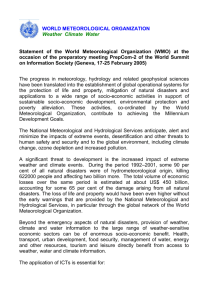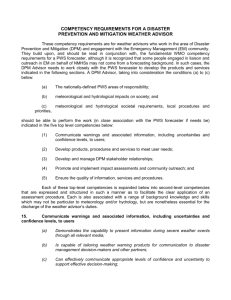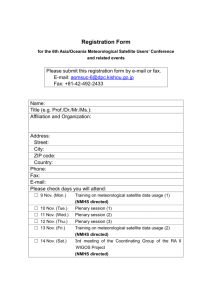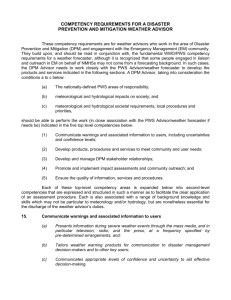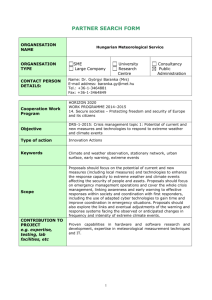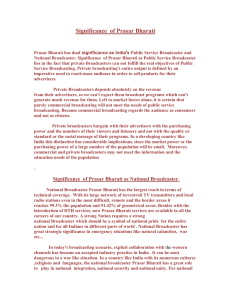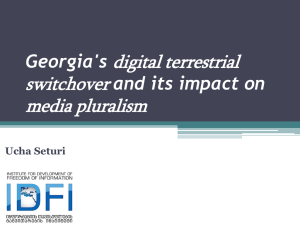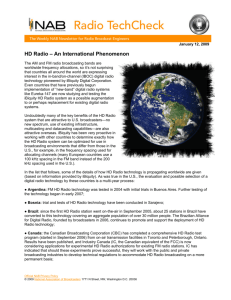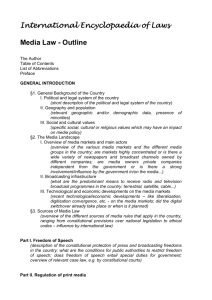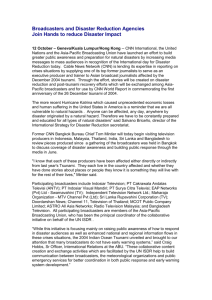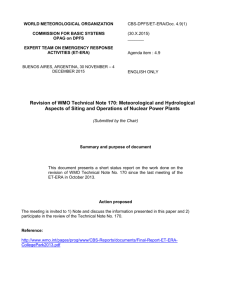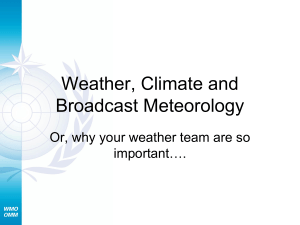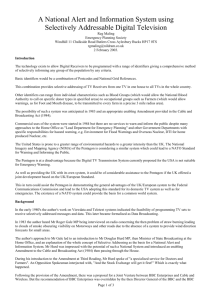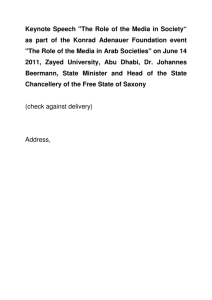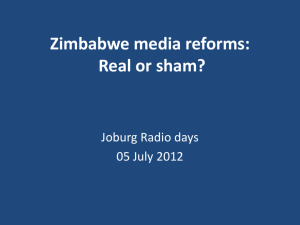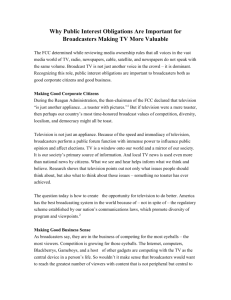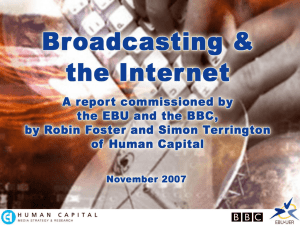Competency Requirements for Weather Broadcasters and
advertisement
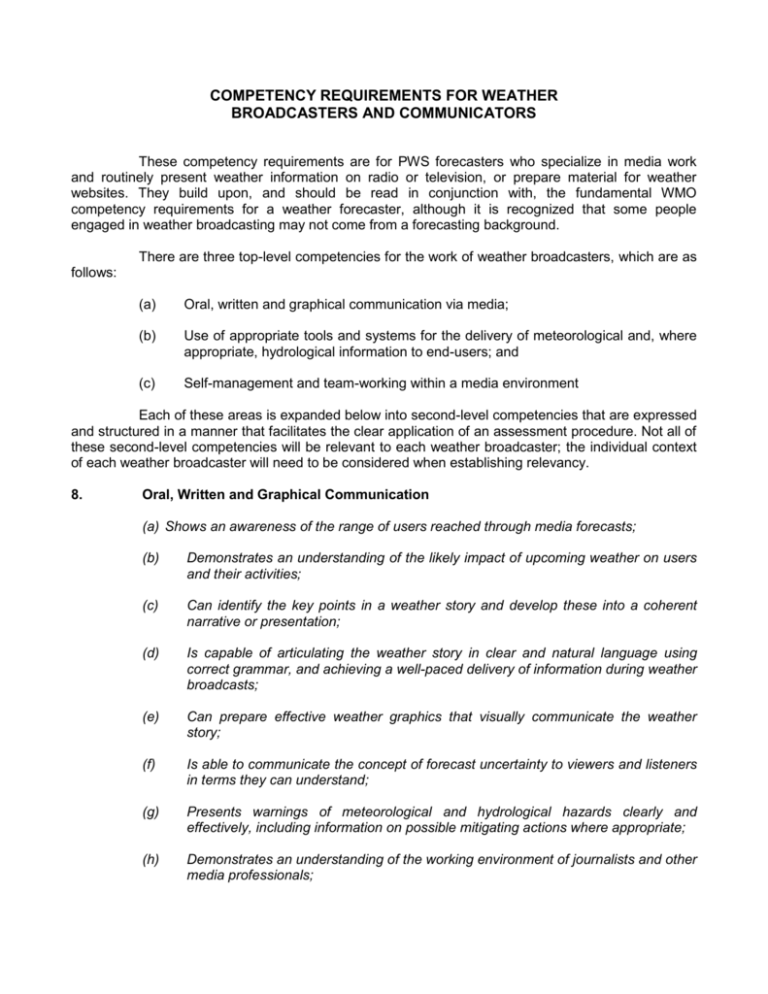
COMPETENCY REQUIREMENTS FOR WEATHER BROADCASTERS AND COMMUNICATORS These competency requirements are for PWS forecasters who specialize in media work and routinely present weather information on radio or television, or prepare material for weather websites. They build upon, and should be read in conjunction with, the fundamental WMO competency requirements for a weather forecaster, although it is recognized that some people engaged in weather broadcasting may not come from a forecasting background. There are three top-level competencies for the work of weather broadcasters, which are as follows: (a) Oral, written and graphical communication via media; (b) Use of appropriate tools and systems for the delivery of meteorological and, where appropriate, hydrological information to end-users; and (c) Self-management and team-working within a media environment Each of these areas is expanded below into second-level competencies that are expressed and structured in a manner that facilitates the clear application of an assessment procedure. Not all of these second-level competencies will be relevant to each weather broadcaster; the individual context of each weather broadcaster will need to be considered when establishing relevancy. 8. Oral, Written and Graphical Communication (a) Shows an awareness of the range of users reached through media forecasts; (b) Demonstrates an understanding of the likely impact of upcoming weather on users and their activities; (c) Can identify the key points in a weather story and develop these into a coherent narrative or presentation; (d) Is capable of articulating the weather story in clear and natural language using correct grammar, and achieving a well-paced delivery of information during weather broadcasts; (e) Can prepare effective weather graphics that visually communicate the weather story; (f) Is able to communicate the concept of forecast uncertainty to viewers and listeners in terms they can understand; (g) Presents warnings of meteorological and hydrological hazards clearly and effectively, including information on possible mitigating actions where appropriate; (h) Demonstrates an understanding of the working environment of journalists and other media professionals; 9. 10. (i) Creates and delivers presentations on meteorological and hydrological topics to external agencies and to the public; and (j) Is capable of preparing and delivering educational material to a wide range of audience, from children to fellow-professionals. Effective use of tools and systems (a) Exhibits a thorough knowledge and understanding of the function and, where appropriate, operation of the different technological elements (PCs, servers, mixers, amplifiers, cameras, etc.) commonly employed in weather broadcasting; (b) Displays a thorough knowledge of the weather graphics software packages used to prepare weather bulletins, and an ability to exploit this knowledge effectively; (c) Applies routine production protocols appropriate to the service provision environment and, (d) Designs and incorporates new graphic elements into a weather bulletin while maintaining alignment with broader editorial policies. Self-management and team-working (a) Has knowledge of the editorial policy applied to weather broadcasting, and is capable of developing and proposing revisions to such policies in response to changing circumstances, both meteorological and otherwise; (b) Delivers weather broadcasts reliably and on-time in accordance with broadcast schedules; (c) Implements, where relevant, the “Single Official Voice” policy in respect to warnings of severe weather and other public safety messages; (d) Presents an appearance which enhances the brand value both of the NMHS and the broadcaster, and does not detract from, or conflict with, the proper tone of the weather message; (e) Exhibits the confidence to express personality in a manner that facilitates the authoritative delivery of the weather forecast; (f) Contributes to the promotion of weather presentation services to broadcast companies, and articulates the benefits of good weather broadcasting practices both within the NMHS, and to non-meteorological broadcast management; (g) Does not allow commercial sponsorship to unduly obscure, or conflict with, the weather message; (h) Critiques their own and other broadcasters performances in a constructive and positive manner; and (i) Mentors junior colleagues and provides support and advice as required.




